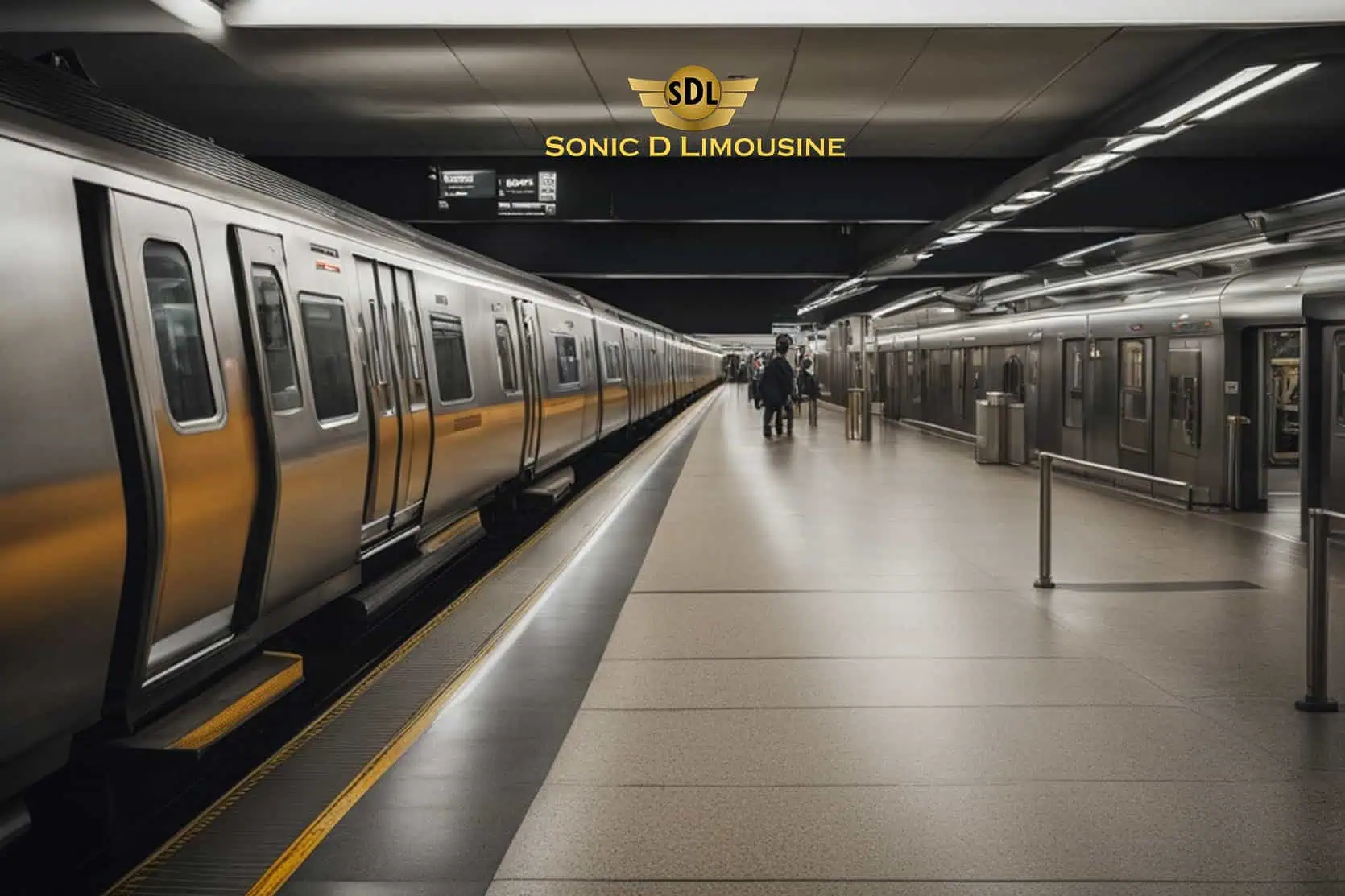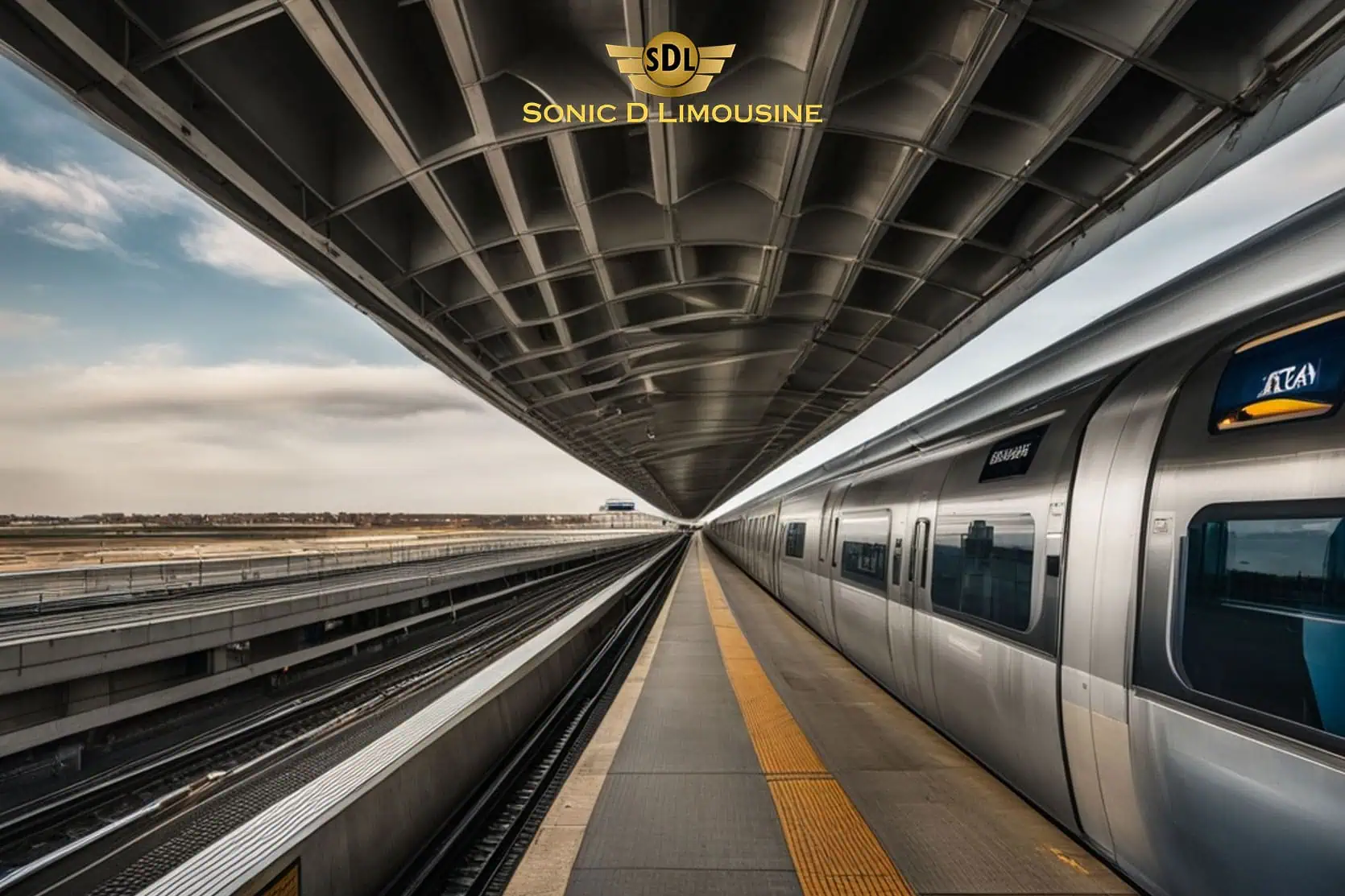In this comprehensive guide, we delve into the fascinating world of the PATH train system, focusing on the iconic World Trade Center Station in New York City. As one of the busiest transportation hubs in the city, the station plays a vital role in connecting commuters between New York and New Jersey. Whether you’re a daily commuter or a curious traveler, this article offers valuable insights into the station’s amenities, its architectural marvels, and its critical role in the city’s transit network. Read on to discover why the World Trade Center Station is a cornerstone of New York’s transportation infrastructure in 2025.
Article Outline
1. What is the PATH System and How Does it Connect New York and New Jersey?
The PATH (Port Authority Trans-Hudson) system is a critical rail service connecting New York City with various locations in New Jersey. It provides a convenient and efficient means of transportation for thousands of commuters daily. The PATH train plays a significant role in bridging the gap between the two states, offering a reliable alternative to other forms of transportation, such as ferries or buses.
2. Navigating the World Trade Center Station: A Map and Guide
The World Trade Center Station is a central hub in the PATH system, featuring a complex layout that can be daunting for first-time visitors. With a detailed map, travelers can easily navigate through the station’s various levels, including the mezzanine level and ground level, where they can find direct access to other transit options.
3. The Architectural Marvel of the Oculus
Designed by Santiago Calatrava, the Oculus is more than just a transportation hub; it is an architectural masterpiece. Its unique design symbolizes a dove in flight, providing a breathtaking visual experience for visitors. The Oculus houses numerous shops and amenities, making it a vibrant part of the World Trade Center complex.
4. How to Access the PATH Train from New Jersey Stations
For commuters from New Jersey, accessing the PATH train is straightforward, with several NJ stations such as Newark Liberty and Exchange Place providing direct routes to the World Trade Center Station. This section offers practical tips for a seamless journey from New Jersey to New York City.
5. Exploring the Amenities of the World Trade Center Station
The World Trade Center Station is equipped with various amenities designed to enhance the commuter experience. From restroom facilities to shopping options at Westfield, the station caters to the needs of daily travelers and tourists alike.
6. What Makes the World Trade Center Station a Transportation Hub?
As a key transportation hub, the World Trade Center Station connects multiple subway lines and local city buses, facilitating seamless transit across lower Manhattan. Its strategic location near landmarks such as Ground Zero and Brookfield Place further enhances its significance.
7. The Role of the World Trade Center Station in Lower Manhattan’s Revitalization
Since its reconstruction, the World Trade Center Station has played a pivotal role in the revitalization of lower Manhattan. By attracting businesses and tourists, it has contributed to the area’s economic growth and cultural resurgence.
8. How to Avoid Delays and Optimize Your Commute
Commuters often face challenges such as delays and crowded trains. This section provides strategies to optimize travel, including using the PATH system’s schedule updates and exploring alternative routes during peak hours.
9. The Future of the PATH Train System: What’s Next for 2025?
In 2025, the PATH train system continues to evolve, with plans for expansion and technological advancements aimed at improving efficiency and passenger experience. This section explores future developments and their potential impact on commuters.
10. Frequently Asked Questions About the World Trade Center Station
This section addresses common questions about the World Trade Center Station, such as its history, operational hours, and tips for navigating the PATH system. It serves as a handy reference for both new and seasoned travelers.
Detailed Explanations
1. What is the PATH System and How Does it Connect New York and New Jersey?
The PATH system is a vital transportation link between New York City and New Jersey, providing an efficient and reliable rail service for commuters. Operated by the Port Authority of New York and New Jersey, the PATH train connects major NJ stations, including Newark Liberty and Exchange Place, to key locations in New York City, such as the World Trade Center Station. As a critical component of the region’s transit network, the PATH system facilitates the daily movement of thousands of passengers, reducing reliance on cars and alleviating traffic congestion. By offering a convenient alternative to ferries and buses, the PATH train plays a crucial role in maintaining the economic vitality of both states.
2. Navigating the World Trade Center Station: A Map and Guide
The World Trade Center Station is a bustling transportation hub located in the heart of lower Manhattan. With its intricate layout, navigating the station can be challenging, especially for first-time visitors. A detailed map is essential for understanding the station’s various levels, including the mezzanine level and ground level, where travelers can find direct access to other transit options. The map also highlights key points of interest, such as the Oculus and adjacent subway lines, ensuring that commuters can efficiently navigate their way through the station and connect with their desired destinations.
3. The Architectural Marvel of the Oculus
The Oculus, designed by renowned architect Santiago Calatrava, is an iconic feature of the World Trade Center Station. Its striking design, resembling a dove in flight, has become a symbol of hope and resilience in the aftermath of the 9/11 attacks. The Oculus serves as both a transportation hub and a commercial space, housing a variety of shops and amenities that cater to the needs of commuters and tourists alike. With its soaring ceilings and abundant natural light, the Oculus offers a unique and inspiring environment for travelers passing through the World Trade Center complex.
4. How to Access the PATH Train from New Jersey Stations
For commuters traveling from New Jersey, accessing the PATH train is a straightforward process. Key NJ stations, such as Newark Liberty and Exchange Place, provide direct routes to the World Trade Center Station, ensuring a seamless journey into New York City. Travelers can easily purchase tickets at these stations and board the PATH train, which offers frequent service throughout the day. By understanding the PATH system’s schedule and utilizing available resources, commuters can efficiently plan their trips and avoid unnecessary delays.
5. Exploring the Amenities of the World Trade Center Station
The World Trade Center Station is equipped with a wide range of amenities designed to enhance the commuter experience. From restroom facilities to shopping options at Westfield, the station caters to the diverse needs of its visitors. Travelers can enjoy a variety of dining and retail options, making it a convenient stop for both daily commuters and tourists exploring the area. The station’s amenities are thoughtfully integrated into its design, ensuring that passengers have access to essential services while navigating the bustling transportation hub.
6. What Makes the World Trade Center Station a Transportation Hub?
The World Trade Center Station is a key transportation hub in New York City, offering connections to multiple subway lines and local city buses. Its strategic location in lower Manhattan allows commuters to easily access other parts of the city, including nearby landmarks such as Ground Zero and Brookfield Place. The station’s role as a transportation hub is further enhanced by its integration with the PATH system, providing a seamless transit experience for passengers traveling between New York and New Jersey. As a central node in the city’s transit network, the World Trade Center Station plays a crucial role in facilitating the movement of people and goods across the metropolitan area.
7. The Role of the World Trade Center Station in Lower Manhattan’s Revitalization
Since its reconstruction, the World Trade Center Station has played a pivotal role in the revitalization of lower Manhattan. By attracting businesses and tourists to the area, the station has contributed to the economic growth and cultural resurgence of the neighborhood. The presence of the station has spurred the development of new commercial and residential properties, transforming lower Manhattan into a vibrant and dynamic community. As a symbol of resilience and renewal, the World Trade Center Station continues to drive the revitalization of the area, ensuring its status as a thriving hub of activity in New York City.
8. How to Avoid Delays and Optimize Your Commute
Commuters often face challenges such as delays and crowded trains when traveling on the PATH system. To optimize their commute, travelers can take advantage of the PATH system’s schedule updates and explore alternative routes during peak hours. By planning their trips in advance and staying informed about potential disruptions, commuters can minimize the impact of delays and ensure a smoother journey. Additionally, understanding the layout of the World Trade Center Station and utilizing available resources, such as maps and transit apps, can help travelers navigate the station more efficiently and avoid unnecessary stress.
9. The Future of the PATH Train System: What’s Next for 2025?
In 2025, the PATH train system continues to evolve, with plans for expansion and technological advancements aimed at improving efficiency and passenger experience. Future developments include the introduction of new train cars with enhanced features, such as increased capacity and improved accessibility for passengers with disabilities. Additionally, the PATH system is exploring the implementation of advanced signaling technologies to reduce delays and enhance safety. These initiatives are part of a broader effort to modernize the PATH system and ensure its continued relevance as a vital transportation link between New York and New Jersey.
10. Frequently Asked Questions About the World Trade Center Station
This section addresses common questions about the World Trade Center Station, providing valuable information for both new and seasoned travelers. Topics covered include the station’s history, operational hours, and tips for navigating the PATH system. By offering practical advice and insights, this section serves as a handy reference for anyone planning to visit or commute through the World Trade Center Station.
Summary of Key Points
- The PATH system is a crucial transportation link between New York City and New Jersey, offering efficient rail service for commuters.
- The World Trade Center Station is a central hub in the PATH system, featuring a complex layout that can be navigated with a detailed map.
- The Oculus, designed by Santiago Calatrava, is an architectural marvel and a symbol of hope and resilience.
- Key NJ stations, such as Newark Liberty and Exchange Place, provide direct routes to the World Trade Center Station.
- The World Trade Center Station offers a wide range of amenities, including shopping and dining options at Westfield.
- As a transportation hub, the station connects multiple subway lines and local city buses, facilitating transit across lower Manhattan.
- The station plays a pivotal role in the revitalization of lower Manhattan, contributing to economic growth and cultural resurgence.
- Commuters can optimize their travel by staying informed about schedule updates and exploring alternative routes during peak hours.
- The PATH train system is evolving with plans for expansion and technological advancements aimed at improving efficiency and passenger experience.
- A FAQ section provides valuable information for travelers navigating the World Trade Center Station and the PATH system.












































0 Comments